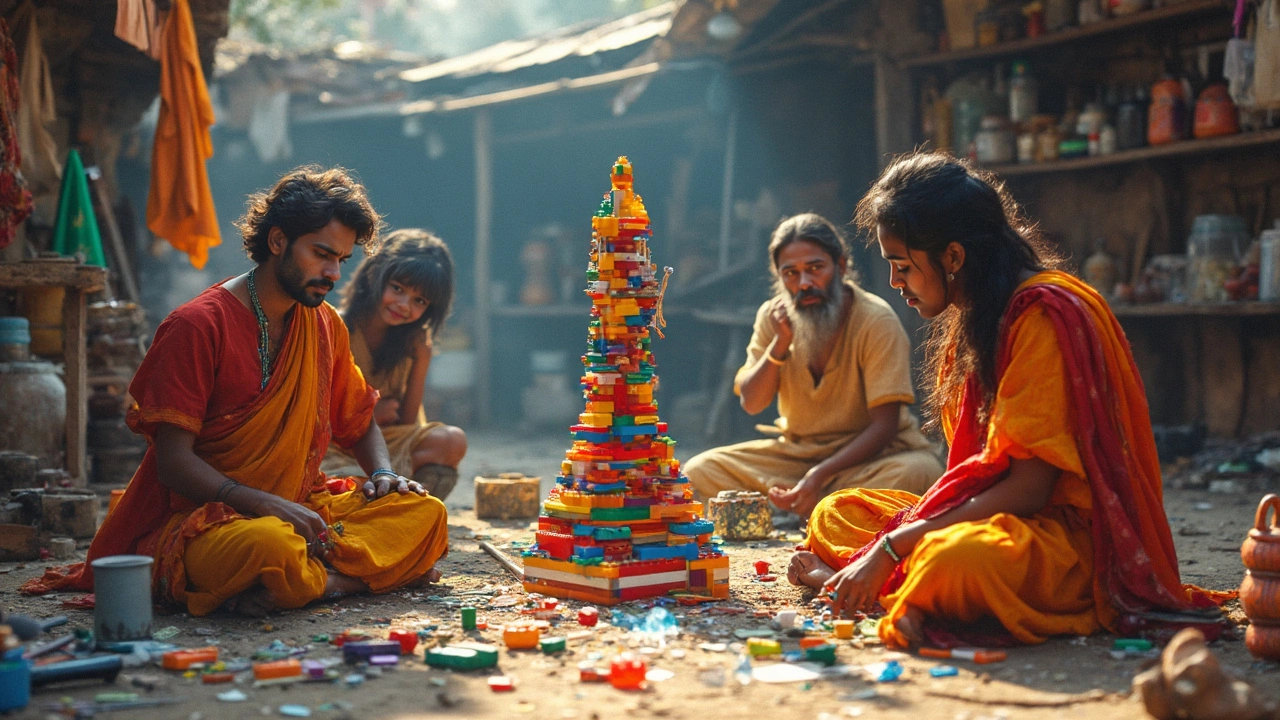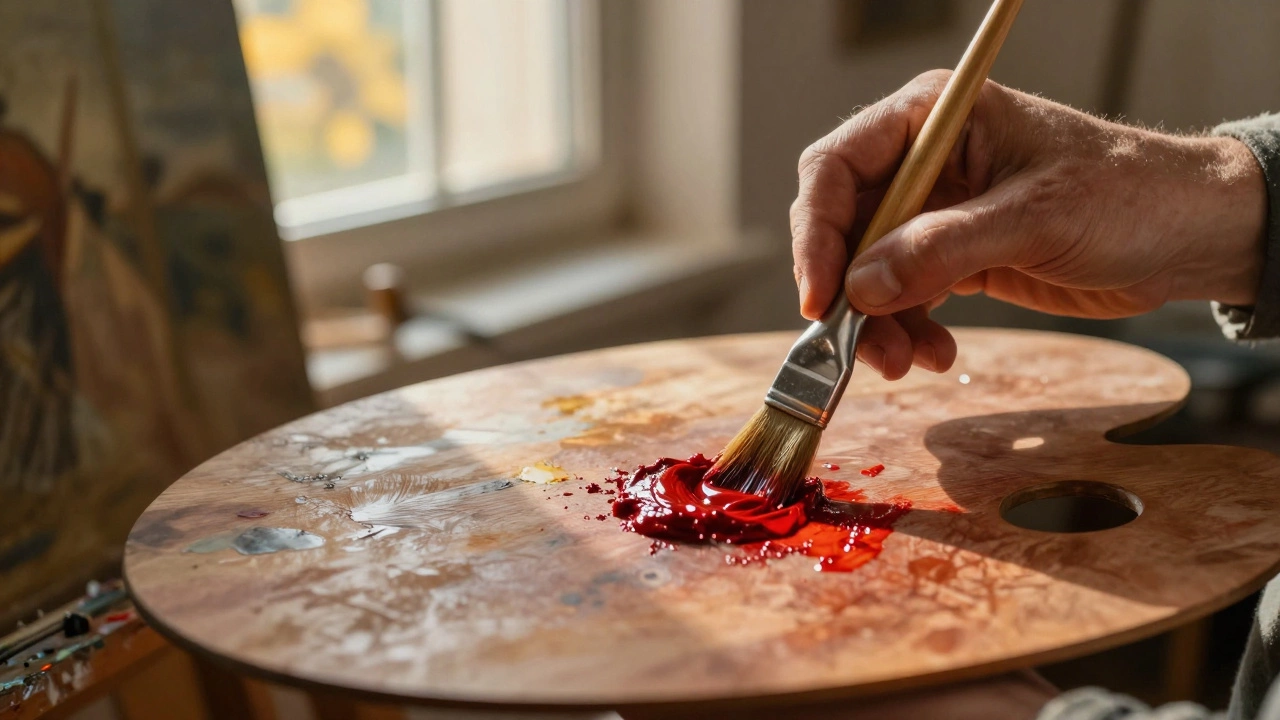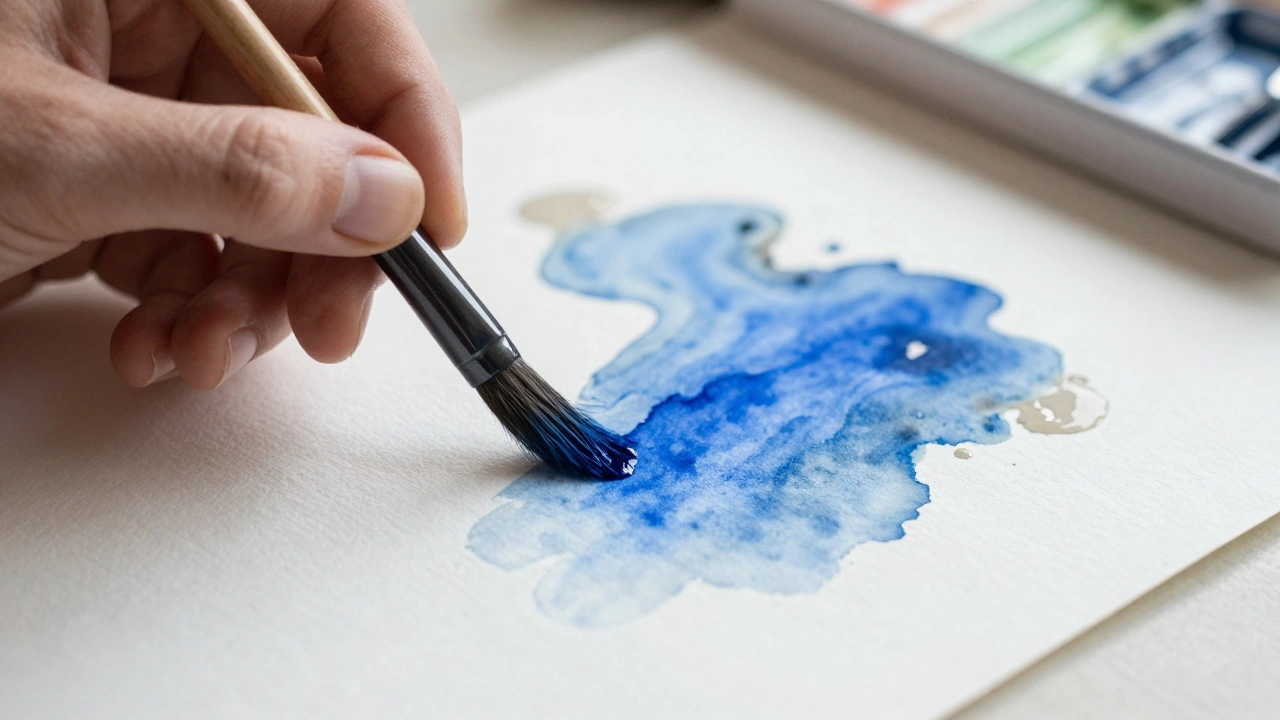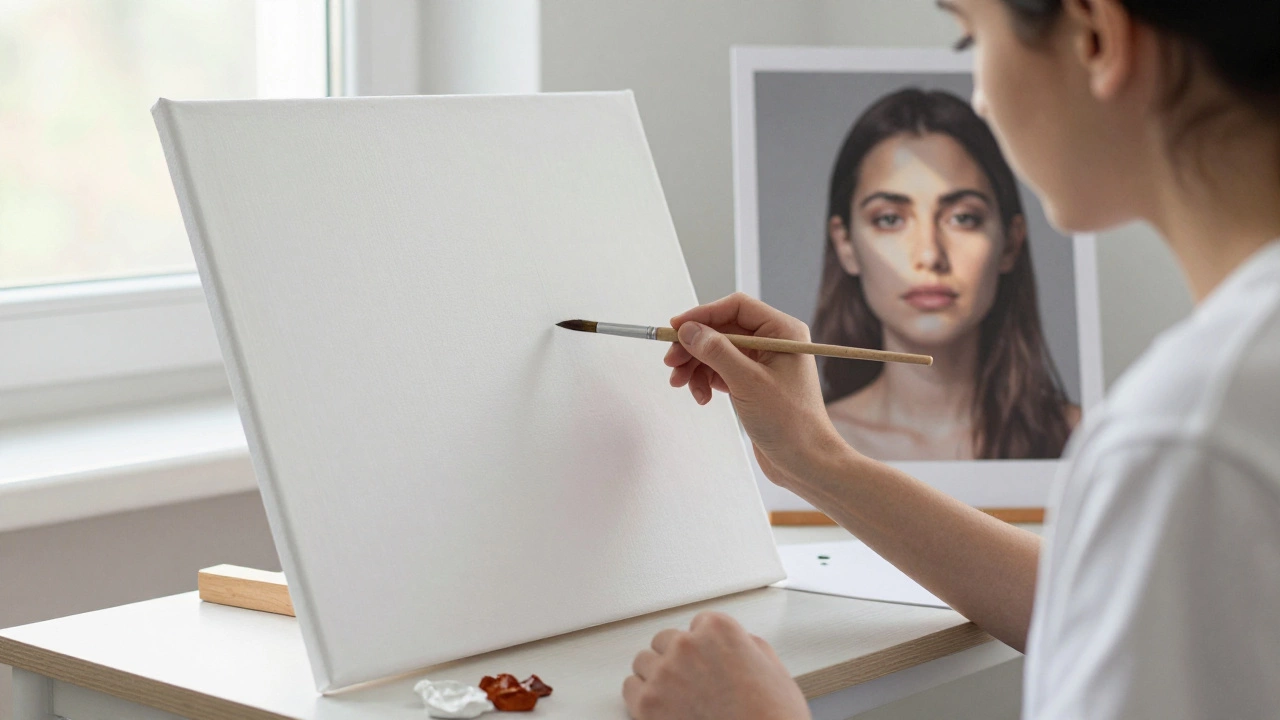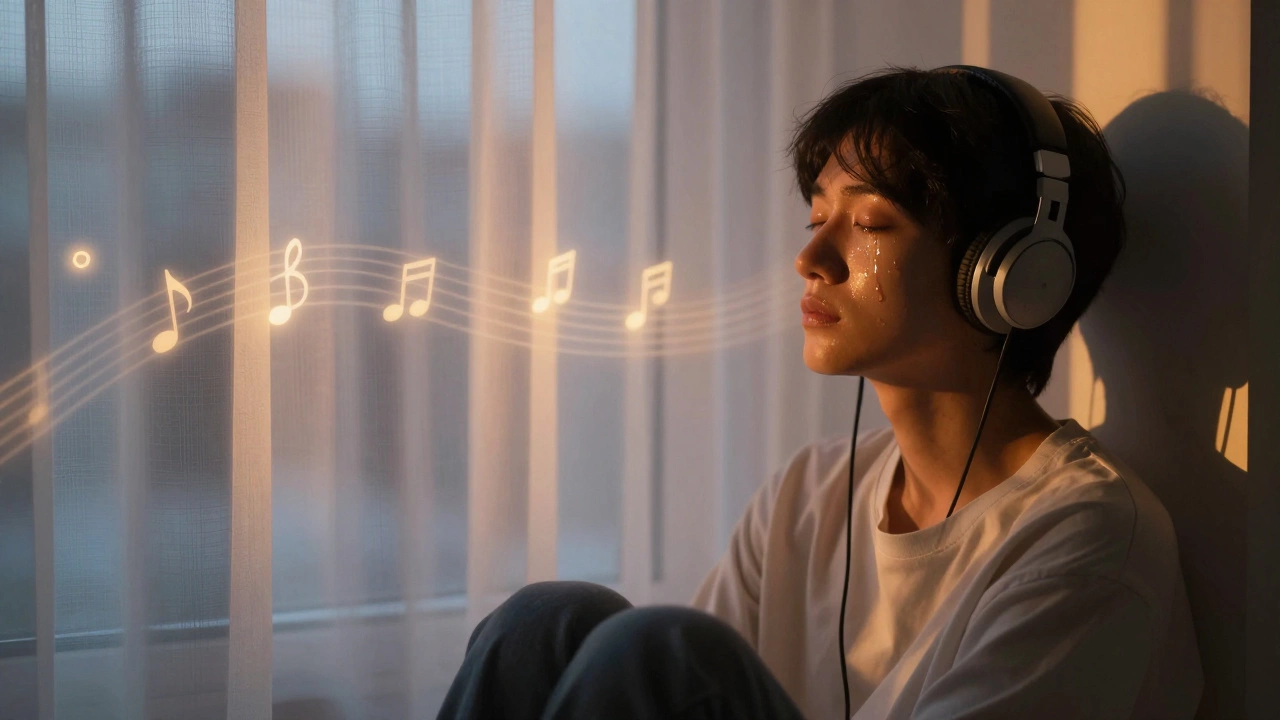So, picture this: traditional sculptures, all marble and stone, the artists with chisels slicing away to reveal masterpieces tucked within. Sound familiar? This has been the go-to image whenever sculpture art comes to mind. But guess what? Sculptures don't have to be just about carving anymore. In our modern world, artists are getting super creative, expanding the possibilities to create jaw-dropping works without ever lifting a chisel.
Now, if you think using a hammer and chisel is the only way to make a sculpture, let me tell you, you're in for a treat. Today’s sculptors are embracing a variety of techniques that go way beyond just carving. Imagine molding clay, casting metals, or even assembling found objects to form intriguing shapes. These not-so-old-school methods have opened the doors to all sorts of creations. The flexibility and freedom these techniques offer are just amazing!
- Chiseling Traditions
- New-age Techniques
- Unconventional Materials
- Influence of Technology
- Environmental Impact
- Personal Artistic Expression
Chiseling Traditions
Alright, let's kick it old school for a second. When folks think of sculpture art, the classic image is usually some artist in a dusty studio, hammer and chisel in hand. And honestly, there's something magical about that. Chiseling has been around for thousands of years, dating back to ancient civilizations like the Greeks and Romans. Their meticulously carved statues still stand today, showing off their incredible skills and attention to detail.
Back in the day, sculptors would spend years creating these masterpieces, working tirelessly to bring their visions to life by removing just the right amount of material. Michelangelo, for example, was quoted saying, "I saw the angel in the marble and carved until I set him free." Talk about dedication! The beauty of chiseling isn't just in the result but in the process itself, where precision and patience are essential.
The tools haven't changed all that much. A simple hammer and a range of chisels are still the cornerstone of this technique. Different chisels serve different purposes, like the point chisel for roughing out, the tooth chisel for texturing, and the flat chisel for finishing touches. And even in today’s high-tech world, this traditional method still holds a special place in the hearts of many artists.
But it’s not just about staying old-fashioned. Chiseling tradition carries with it a profound connection to history and culture, passed down through generations. It's about storytelling and keeping the craftsmanship spirit alive in modern times. And while new methods are emerging, keeping these traditional skills honed doesn’t just preserve the past, but also enriches the future of sculpture art.
New-age Techniques
Gone are the days when every sculpture had to be chiseled from a block of stone. These days, modern sculpture artists are all about mixing it up with some slick and sometimes quirky techniques that move away from traditional carving. The whole idea is to experiment and let creativity flow without constraints.
One cool approach is casting, where liquid materials like bronze or even less conventional choices like acrylic resin are poured into molds. This method allows for detailed pieces and can be replicated precisely if needed. Lost-wax casting, a practice that dates way back to ancient times, is also gaining traction in the modern era for its ability to produce intricate designs.
And let's chat about 3D printing for a sec. How awesome is it that we can now print sculptures? With advancements in technology, creating sculpture art has become much more accessible. Artists can design their pieces on a computer and print them using various materials, ranging from plastics to metal. It’s like turning digital dreams into tangible reality!
Then there’s assemblage art, which might just be the ultimate expression of the 'one person’s trash is another’s treasure' philosophy. Artists gather found objects, which could be anything really—a bike part or an old book—and piece them together to form a sculpture. This technique is all about upcycling and can result in some truly funky and eye-catching works.
These new-age techniques aren't just about flashy gadgets or whims. They're pathways for artists to innovate and express themselves in fresh ways. With such diverse methods at their disposal, artists today are reshaping what it means to create sculpture art, turning any preconceived notions on their head!
Unconventional Materials
Okay, let’s talk materials. When you think of sculpture art, marble, bronze, and stone might top the list. While these are classics, today’s artists are having a blast experimenting with new stuff. From LEGOs to scrap metal, even recycled plastic, the world’s a playground for making sculptures. And why not? Using these materials can make art more accessible and relatable too. Plus, it’s a creative eco-friendly approach!
Ever heard of Tom Brown? He’s an artist who's known for using discarded electronics to make sculptures. Talk about turning trash into treasure! Speaking of creativity, Nathan Sawaya is another genius who builds full-sized sculptures with LEGO bricks. His work’s been showcased worldwide and brings pure joy to anyone who sees it. Talk about playing with blocks on a whole new level.
"The goal isn’t just to create art, but to inspire others to use the resources around them," says Sawaya when interviewed about his LEGO creations.
But it’s not just about LEGOs or scrap metal. Artists are trying all sorts of things like felt, fabrics, and even chocolate—yeah, you read that right! Some artists use food in modern sculpture to create pieces that don’t just look good but would taste good too if you dare to take a bite.
Technology plays a big role here as well. With 3D printing, sculptors can use materials like biodegradable plastics and create intricate designs that were near impossible with traditional materials. Plus, it helps cut down on waste!
Here’s a quick look at some materials artists use today:
- Recycled metal
- Cardboard
- Fabrics
- Plastics from ocean waste
- Food items
With all these modern sculpture materials, art feels more dynamic and inclusive than ever. So, when next you see a sculpture, take a moment to wonder what cool, unexpected materials it might be made of. It adds an extra layer of awesomeness to appreciate!
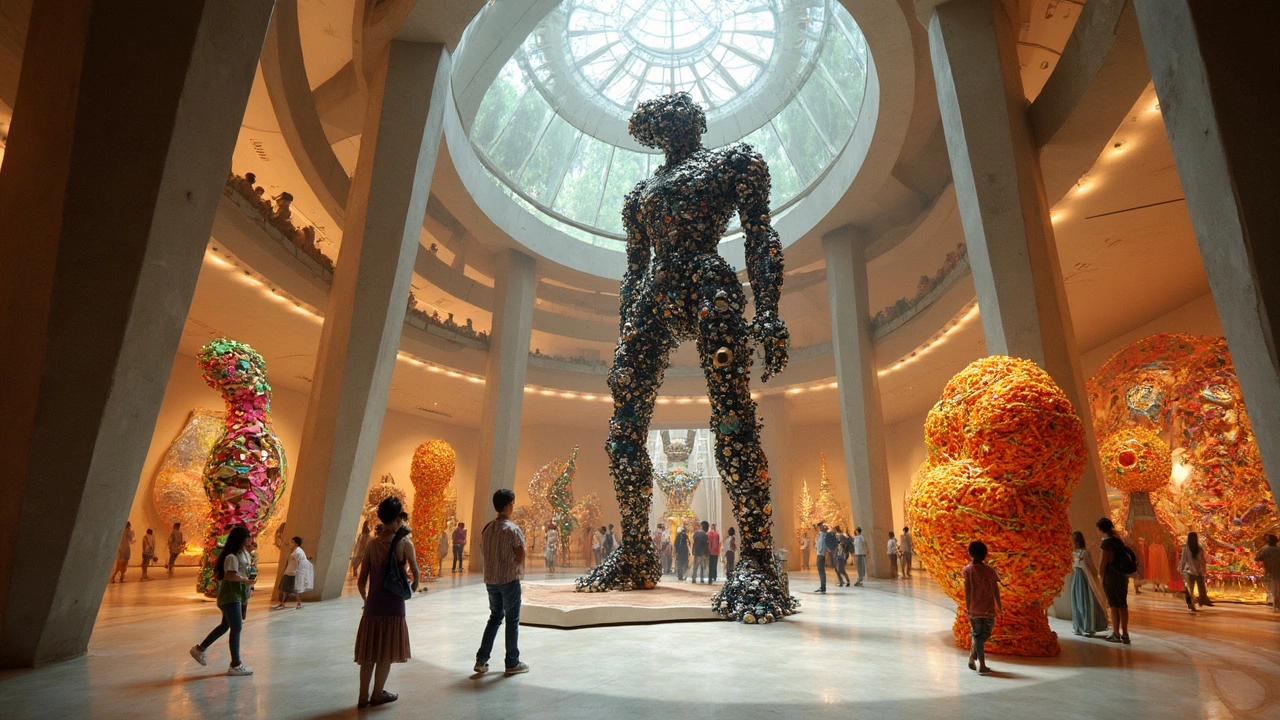
Influence of Technology
Alright, let’s chat about the cool ways technology is shaking things up in the world of sculpture art. These days, artists have way more tools than just a chisel. With tech in the mix, the art scene has seen some pretty wild innovations that are worth talking about.
Ever heard of 3D printing in sculpture? It’s a game-changer! Artists can now design sculptures on a computer and bring them to life by ‘printing’ them layer by layer. This means complicated designs that would have taken ages using carving can be created with less hassle. Not to mention, it’s super precise, which is a big deal when every detail counts.
Another exciting bit is virtual reality (VR). Yep, you can strap on a VR headset and ‘sculpt’ in a digital space. Imagine being able to tweak and change your design in mid-air before hitting the real world with it. It's like a playground for artists to test out ideas without wasting materials.
Let’s not forget about laser cutting and CNC machines. These machines use computer designs to cut and shape materials with crazy accuracy. This tech is especially useful when working with materials that are tough to handle manually.
Here’s a quick peek at how technology stacks up:
| Technique | Uses | Benefits |
|---|---|---|
| 3D Printing | Plastic, Resin, Metal | Precision, Speed, Complex Designs |
| VR Sculpting | Digital Modeling | Creative Freedom, No Material Costs |
| Laser Cutting | Wood, Acrylic, Metal | Accuracy, Efficient Material Use |
All in all, these techie approaches have redefined what’s possible in sculpture. They're helping artists break boundaries, try new things, and create works that would have been unimaginable just a few decades ago.
Environmental Impact
When you think about art, the environment might not pop into your mind immediately. But yeah, the way we create art can have a big hit on our planet. Classic sculpture art methods, like marble carving, can leave a heavy carbon footprint. It involves mining, transporting massive stones, and waste from removing unwanted material. Not eco-friendly, right?
Enter modern techniques, shaking things up in a good way! Artists today are on the lookout for sustainable practices. They experiment with recycled materials, breathing new life into stuff that would otherwise head to the dump. Think of sculptures made from scrap metal or pieces put together from discarded plastics—it's like a whole new art world out there.
The benefits? Less waste, less energy, and more creativity. By ditching traditional reliance on raw, unrenewable resources, artists can drastically reduce their environmental impact. Plus, artists who substitute unconventional materials often produce unique styles and expressions, offering fresh perspectives.
Even technology is stepping in to help. 3D printing is a game-changer, allowing artists to print sculptures layer by layer with minimal material wastage. This method not only cuts down on waste but can also use biodegradable or recycled printing filaments. Imagine a sculpture created entirely from recycled bottles! It’s art that does good for the Earth.
Personal Artistic Expression
When it comes to making art, personal artistic expression is king. With sculpture art evolving, artists find new ways to tell their stories and show who they are. It's not just about how you carve something out anymore. It's more about the message, the materials you use, and how you put it all together.
Think about how someone can use something as simple as LEGO bricks to create a complex sculpture. Artist Nathan Sawaya does just that, using colorful blocks to make incredible, detailed pieces that hit home with both kids and adults. It's a mix of playfulness and skill that shows off a unique sense of expression.
Or consider how some artists use recycled materials and found objects to craft their works. This not only highlights creativity but also nods to the importance of sustainability. It’s art with a purpose. British artist Tony Cragg, for example, is famous for using waste materials like plastic and metal to create stunning installations. With every piece, he's showing us that art can be environmentally friendly too.
Whether it's bending wires into lifelike animals or assembling driftwood into abstract forms, these contemporary methods let artists communicate on personal and global levels. It’s about going beyond the traditional notion of what sculpture should be and pushing the boundaries of creativity.
In the end, what's important is that artists have the freedom to choose how they express themselves. Whether through bold new techniques or time-honored traditions, the essence of personal artistic expression remains at the heart of it all. So next time you spot a sculpture, think about what went into making it and, more importantly, what it’s trying to say.
